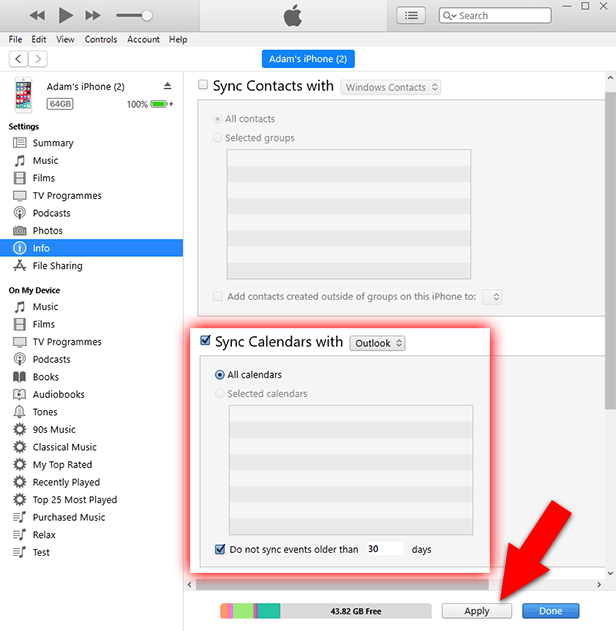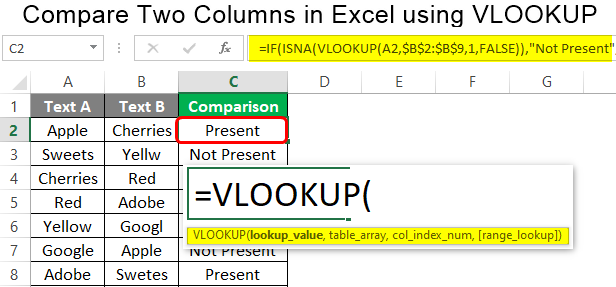Sync iPhone Calendar with Outlook: A Guide

In today's fast-paced world, managing your schedule efficiently is crucial for both personal and professional success. With the integration of various devices and applications, keeping your calendar organized and synchronized across platforms has become a necessity. If you're an iPhone user who relies on Microsoft Outlook for your calendar and email needs, this guide will walk you through the process of seamlessly syncing your iPhone calendar with Outlook, ensuring that your schedule remains up-to-date and accessible from both devices.
The Importance of Calendar Syncing

For individuals who juggle multiple commitments, having a unified calendar is essential. Calendar syncing ensures that your schedule is accessible and consistent across all your devices, preventing potential scheduling conflicts and missed appointments. By synchronizing your iPhone calendar with Outlook, you gain the flexibility to manage your schedule on the go, while also maintaining a centralized calendar system that integrates seamlessly with your Microsoft Outlook account.
Understanding the Syncing Process

Syncing your iPhone calendar with Outlook involves a series of steps to establish a connection between the two platforms. Here’s a breakdown of the process and the key considerations to keep in mind:
Step 1: Enabling Calendar Syncing on iPhone
To initiate the syncing process, you’ll need to enable calendar synchronization on your iPhone. This can be done by accessing your iPhone’s settings and selecting the Calendar option. From there, you’ll be able to choose the accounts you wish to sync with, including your Microsoft Outlook account. By enabling this synchronization, you ensure that any changes made to your calendar on your iPhone will be reflected in your Outlook calendar and vice versa.
Step 2: Configuring Outlook for Syncing
On the Outlook side, you’ll need to configure your account settings to enable calendar synchronization. This typically involves accessing your Outlook account settings and locating the Sync or Synchronization options. Here, you can specify the frequency of synchronization and choose the calendar events you wish to sync. It’s important to note that some Outlook versions may require additional setup, such as configuring your Outlook account as an Exchange account, to facilitate seamless synchronization with your iPhone calendar.
Step 3: Ensuring Consistent Time Zones
One critical aspect of calendar synchronization is ensuring that your iPhone and Outlook calendars are set to the same time zone. Time zone discrepancies can lead to scheduling errors and confusion. Before initiating the syncing process, make sure that both your iPhone and Outlook calendars are set to the correct time zone. This will ensure that your calendar events are displayed accurately and consistently across both platforms.
Step 4: Managing Event Details
When syncing your calendar, it’s essential to consider the level of detail you wish to synchronize. You can choose to sync only the basic event details, such as the event title and date, or include additional information like event descriptions, locations, and attendees. The level of detail you select will depend on your personal preferences and the specific needs of your schedule. Keep in mind that syncing more detailed information may require additional setup and consideration to ensure accurate synchronization.
Step 5: Troubleshooting Common Issues
While calendar syncing is generally straightforward, occasional issues may arise. Common problems include event duplication, missing events, or synchronization errors. If you encounter any of these issues, it’s important to troubleshoot the problem systematically. Start by checking your calendar settings on both iPhone and Outlook to ensure they are correctly configured. Additionally, consider resetting your synchronization settings or contacting technical support for further assistance.
Advanced Synchronization Options
For advanced users or those with specific calendar synchronization requirements, several additional options are available to enhance the syncing process:
Two-Way Synchronization
By default, calendar synchronization is often set up as a one-way process, with changes made on your iPhone calendar being synchronized to Outlook. However, you can enable two-way synchronization, ensuring that changes made on either platform are reflected on the other. This option is particularly useful for individuals who frequently update their calendars on both iPhone and Outlook.
Selective Event Synchronization
If you have multiple calendars on your iPhone or Outlook, you may wish to synchronize only specific calendars or events. Selective event synchronization allows you to choose which calendars or events are included in the synchronization process. This option provides greater control over your calendar management and ensures that only relevant events are synchronized across platforms.
Real-Time Synchronization
For those who require immediate access to updated calendar information, real-time synchronization can be enabled. This option ensures that any changes made to your calendar are instantly reflected on both your iPhone and Outlook, providing the most up-to-date schedule information. Real-time synchronization is particularly beneficial for individuals with busy schedules who need immediate access to their calendar data.
Syncing with Multiple Devices
If you use multiple devices, such as an iPhone, iPad, and a desktop computer with Outlook, you can set up synchronization across all devices. This ensures that your calendar is consistently updated across all platforms, providing a seamless scheduling experience regardless of the device you’re using. By synchronizing your calendar with multiple devices, you gain the flexibility to manage your schedule from various locations and devices.
Performance Analysis and Optimization
Once you’ve successfully synchronized your iPhone calendar with Outlook, it’s essential to monitor the performance of the synchronization process to ensure optimal calendar management. Regularly review your calendar events on both platforms to identify any potential issues or discrepancies. Additionally, consider the following performance analysis and optimization strategies:
Regular Sync Checks
Perform regular checks to ensure that your calendar events are accurately synchronized across iPhone and Outlook. Look for any missing events, duplicated entries, or incorrect time zones. By conducting these checks on a periodic basis, you can quickly identify and address any synchronization issues, maintaining a consistent and accurate calendar.
Event Consistency and Accuracy
Pay close attention to the consistency and accuracy of your calendar events. Ensure that event details, such as dates, times, locations, and attendees, are correctly synchronized across both platforms. Regularly review your calendar events to verify their accuracy and make any necessary adjustments to maintain a reliable and error-free schedule.
Optimizing Synchronization Frequency
Consider the frequency of your calendar synchronization. While real-time synchronization provides immediate updates, it may not be necessary for all users. If you have a relatively stable schedule with few frequent changes, you may opt for less frequent synchronization to conserve battery life and reduce data usage. On the other hand, if you have a dynamic schedule with frequent updates, real-time synchronization is likely the best option to ensure an up-to-date calendar.
Event Conflict Resolution
In cases where events are scheduled for the same time on both your iPhone and Outlook calendars, conflict resolution becomes crucial. Determine how you wish to handle such conflicts. You can choose to prioritize events based on specific criteria, such as the calendar they originated from or the level of importance assigned to the event. Alternatively, you may wish to receive notifications or alerts when such conflicts occur, allowing you to manually resolve them based on your schedule.
Future Implications and Enhancements

As technology advances and user needs evolve, the landscape of calendar synchronization is likely to undergo further enhancements and improvements. Here are some potential future implications and developments to anticipate:
Seamless Integration with Other Platforms
In the future, we can expect even greater integration between various calendar platforms. As cloud-based services and cross-platform compatibility become more prevalent, calendar synchronization will likely expand to include additional platforms, such as Google Calendar, Apple Calendar, and other popular scheduling applications. This will provide users with even more flexibility and choice when managing their schedules.
Advanced Calendar Intelligence
With the advancements in artificial intelligence and machine learning, we may see the development of intelligent calendar systems that can predict and suggest optimal schedules based on user preferences and patterns. These systems could analyze your past calendar data, identify trends, and make personalized recommendations for event timing and scheduling. Such advancements would further enhance the efficiency and convenience of calendar management.
Enhanced Security and Privacy Features
As calendar synchronization becomes more widespread, ensuring the security and privacy of user data will become increasingly important. Future developments may focus on implementing advanced encryption protocols, multi-factor authentication, and robust data protection measures to safeguard user calendar information. Additionally, user control over data sharing and synchronization preferences will likely be enhanced, providing greater transparency and control over personal calendar data.
Personalized Calendar Experiences
Calendar synchronization platforms may evolve to offer personalized experiences tailored to individual user needs. This could include customized calendar views, personalized event suggestions based on user preferences and interests, and integrated productivity tools to enhance overall schedule management. By leveraging user data and preferences, calendar synchronization platforms could provide a more tailored and intuitive scheduling experience.
Conclusion
Synchronizing your iPhone calendar with Outlook is a powerful way to manage your schedule efficiently and consistently across multiple devices. By following the steps outlined in this guide and considering the advanced synchronization options available, you can ensure a seamless and accurate calendar experience. As technology continues to evolve, the future of calendar synchronization holds exciting possibilities, offering even greater integration, intelligence, and personalization to enhance our daily scheduling needs.
How do I troubleshoot common issues with calendar synchronization?
+If you encounter issues with calendar synchronization, start by checking your calendar settings on both iPhone and Outlook to ensure they are correctly configured. Look for any discrepancies in time zones or event details. If problems persist, consider resetting your synchronization settings or contacting technical support for further assistance.
Can I synchronize my iPhone calendar with multiple Outlook accounts?
+Yes, you can synchronize your iPhone calendar with multiple Outlook accounts. To do this, you’ll need to set up separate calendar connections for each Outlook account. This allows you to manage and synchronize calendars from different Outlook accounts on your iPhone.
How often should I perform a manual sync of my calendar?
+The frequency of manual calendar synchronization depends on your personal preferences and schedule. If you have a dynamic schedule with frequent updates, performing a manual sync daily or even multiple times a day can ensure that your calendar remains up-to-date. However, if your schedule is relatively stable, you may only need to perform a manual sync weekly or monthly.



